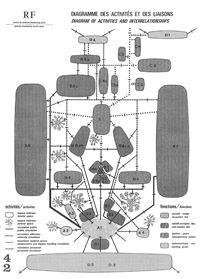The Forms of Bureaucracy at Centre Beaubourg

The 1970 international competition for the Centre Beaubourg (later renamed the Centre Georges Pompidou) proposed a new cultural institution for the information age: a museum and library conceived as a giant computer. The competition brief represented this enormous cultural information processing system through a program comprising meticulously tabulated requirements, diagrams of spatial relationships, and specifications for all technical aspects of the building’s performance.
This paper examines the visual and notational languages of programming used at Beaubourg to control the performance of this information machine and to model the complex exchanges upon which the new institution's metabolic processes were based.
keywords: Centre Pompidou, architectural programming, technocracy, software studies


Add comment
Log in to post comments